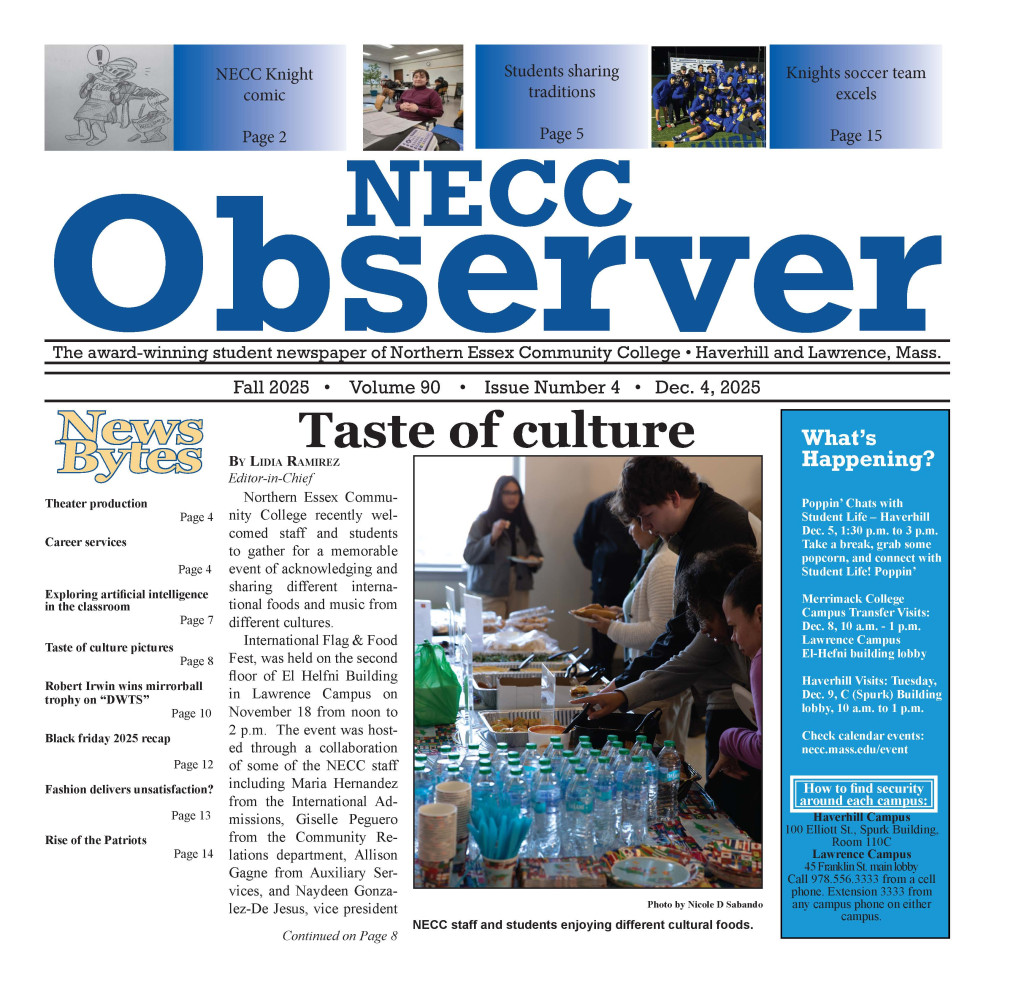NECC’s parking permit policy is in its third semester of employment and it is still stirring up controversy. The passes themselves cost $8.50 for students and adjunct faculty per semester and $17 for full-time faculty for the academic year. Although they are inexpensive when compared to other colleges’ parking passes, some faculty, staff and students still dislike them based on the principle of the matter.
Lt. Dan Tirone, operations commander of security for the Haverhill campus, said that the permits are disliked but very helpful. In situations where someone has left their lights on or has gotten into an accident, the permit system makes it easier to locate the owners of the cars involved and handle the situation. Tirone said, by administration’s standards, the main purpose of the permits is to keep tabs on who is on campus.
If a student, staff or faculty member gets a new car or has to take a car that isn’t theirs to the school, they have to notify security that there is a vehicle in the lot that belongs to someone with a permit, without a visible permit. “It’s imperative to come in if you have a different car and let us know so we can give you a temporary pass,” said Tirone.
Tirone said that there are two or three rounds a day in the different lots to look for violators of the parking policy, depending on how busy campus is that day. Weather conditions rarely affect rounds.
“I’m not going to put my people in harm’s way but weather doesn’t matter. That would be unfair to people paying for permits. People without permits could be taking those spots closer to their building that they’re actually paying for,” said Tirone.
“We see more people going for free parking more in the fall in Haverhill,” said Tirone. The nicer weather makes the walk from the Tech Center to wherever people are heading a lot easier.
The Buckley Garage in Lawrence isn’t a very far walk no matter the weather. Lt. Tirone said, “Lawrence [security] has to be more careful because they’re downtown with meters. More people try to sneak in.”
The only people exempt from buying permits are those with handicap placards and plates. State law states that as long as these drivers are parked in handicapped spots, they cannot be ticketed.
When cars without permits park in permit-only areas and get ticketed, they can be issued a fine. The fines collected throughout the year do not disappear but can be appealed in person at the security office or online where the permits are sold. Unpaid fines do not affect your ability to sign up for classes, petition to graduate or anything else having to do with academics, but they do accrue interest.
For those still against paying for permits, Tirone says there are roughly 300 or 400 non-permit parking spots next to the Hartleb Technology Center in Haverhill, and the Buckley Garage offers free parking for the Lawrence campus.

